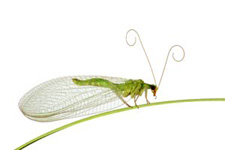Midge Repellent

All About Midge Repellent and Avoiding Bites
Midge repellent and warm weather seem to go hand in hand. Although midges are exactly dangerous they are very pesky, and they can leave some viscous bites. The term midge is actually is an umbrella term for a variety of very small flying insects. There are approximately 40 different species of midges, although not all of these will bite humans. The most common biting midge is known as the highland midge, which is likely the most annoying of them all.
Even the highland midge does not normally bite humans, but when the female becomes pregnant she will feed on blood, and this is where the biting comes in. The best way to avoid being bitten is with midge repellent, but for a repellent to work properly it must be the type that repels midges in two different ways.
The first way a good midge repellent will protect you is by covering up your body scent so that the midges cannot detect you from a distance. Another way repellent works is by making the taste of your skin different so that the midge will not want to bite you. The most popular chemical used in midge repellent is DEET, which stands for diethyl-meta-toluamide. Although DEET is the most effective chemical to add to an insect repellent, it can cause an allergic reaction in some people; in addition, this chemical is toxic if ingested so it is important to ensure that the repellent is used only as directed.
Some additional problems to look for when using midge repellent that contains DEET is severe rash or muscle spasm due to the chemical entering the blood stream through the skin. If you do use a repellent with DEET, be sure that you do not use in areas where the skin is broken, plus you must keep it away from the eyes. Additionally, DEET may damage some materials such as plastic and leather.
As an alternative to repellent that contains DEET there is also the option of using a natural midge repellent. Some of the natural alternatives contain substances such as eucalyptus, and although it may not be quit as effective, it does help plus you don’t have to worry about a dangerous chemical.
Of course there are ways to keep from getting bitten by midges aside from using a repellent. If you would prefer a more natural method of fighting biting insects you can try wearing loose fitting clothing. Biting insects can easily bite through clothing if it is tight against the skin; this isn’t the case if the clothes are loose. In addition to wearing loose fitting clothing you may also want to try wearing pants and a long sleeve shirt.
There are certain times of the day that you will want to avoid being outdoors. Midges like to bite at any time of the day but they are far more active at dusk and dawn. If you can avoid being outdoors during these times you can reduce the change of being bitten.
Eating garlic is said to help make you a less attractive target to midges. If you eat a good amount of garlic on a daily basis this should help to keep you from being bitten.
Of course there is always the option of using a natural midge repellent, you can make your own out of lavender, lemon and body oil, or you can shop around for some repellent from natural remedy stores.
If at all possible it is best to avoid insect repellents that contain DEET, especially if you are being exposed to an insect’s bite that really isn’t all that dangerous. If you do have to use a midge repellent with DEET, make sure that you follow all directions carefully.